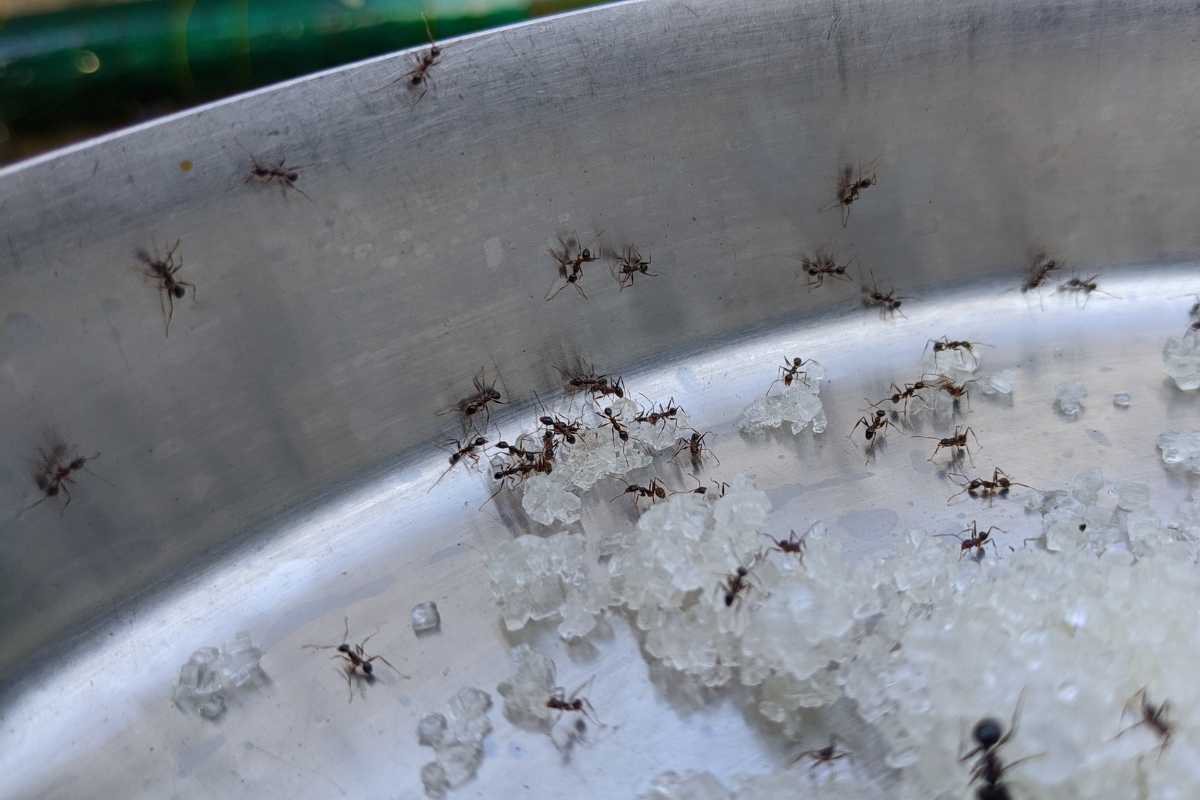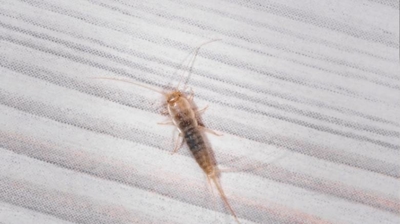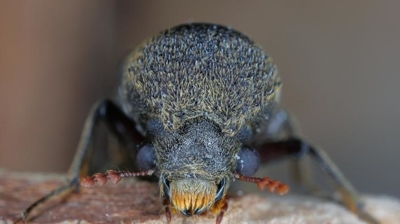
Little Black Ant Control Services

Little Black Ants
Little black ants (Monomorium carbonarium) are not directly harmful to humans, but they can still pose significant issues, especially when they infest homes or businesses. Here is why they should not be ignored:
- Do Not Bite or Sting: Little black ants are not aggressive and do not sting or bite humans in any meaningful way. Their mandibles are too small to cause any harm.
- Disease Transmission: While they are not known to transmit disease in the way that roaches or rodents can, they can still act as mechanical vectors, meaning they can pick up bacteria and contaminants from unsanitary environments (like garbage or drains) and transfer them to food preparation areas.
- Food Contamination: As they forage for food, they may contaminate stored foods, especially in kitchens, pantries, and food storage areas, which makes them a concern in residential and commercial food settings.
- Wood Damage? No. Unlike carpenter ants or termites, little black ants do not excavate or damage wood.
- Nest Locations: However, they can nest inside wall voids, insulation, under baseboards, and in other hidden structural spaces. Over time, this may contribute to issues like secondary infestations (from moisture, mold, or other pests) and electrical equipment malfunctions if they infest power outlets or control boxes (rare, but not unheard of).
Learn more: Do Little Black Ants Bite? || What Do Little Black Ants Eat?
Little Black Ant Removal
Getting rid of little black ants (Monomorium carbonarium) is important for several reasons. While these ants are small, they can have disproportionately large impacts if left unchecked:
Contamination and Food Safety
- Food contamination: These ants forage widely, often in kitchens, pantries, and food storage areas. Even a small number can contaminate food with bacteria or pathogens picked up from unsanitary surfaces.
- Cross-contamination risk: They can move between garbage, soil, and food preparation areas, potentially spreading germs.
Rapid Colony Expansion
- High reproductive rate: A single colony can expand quickly, creating multiple satellite nests in walls, under floors, or in soil near the house.
- Persistent infestation: Once a colony is established, eradication becomes difficult without targeted control, because ants will keep sending out foragers to find new food sources.
Structural Concerns
- Nesting behavior: While Monomorium carbonarium primarily nests in soil, they can invade buildings through cracks, gaps, or damp areas, particularly near foundations or under floors.
- Damage potential: They don’t chew wood like termites, but their persistent nesting in walls, insulation, and electrical conduits can cause minor structural issues over time, and they may attract other pests to the same locations.
Allergic Reactions and Bites
- Bites and stings: Some people may experience mild reactions to ant bites. While M. carbonarium are generally not aggressive, they can bite defensively.
- Allergy risk: Ant saliva or secretions can trigger skin irritation or exacerbate allergies in sensitive individuals.
Nuisance and Quality of Life
- Indoor nuisance: Seeing ants on counters, sinks, or floors is unpleasant and can stress residents or employees in commercial settings.
- Reputation risk for businesses: For restaurants, food processing facilities, or healthcare environments, ant infestations can violate hygiene standards and damage credibility.
Indicator of Other Issues
- Environmental factors: Their presence can indicate moisture problems, structural gaps, or sanitation issues that may also attract other pests.
- Early detection opportunity: Eliminating ants can help identify and address underlying vulnerabilities in a property before larger infestations occur.
Even though little black ants may seem minor, their persistence, rapid spread, contamination potential, and ability to infiltrate homes or businesses make early control critical. Our professional interventions combine sanitation, exclusion, and targeted baits to prevent colonies from establishing or reestablishing.
Learn more: How To Get Rid Of Little Black Ants
Little Black Ant Control
Hiring our professional little black ant control is often the most effective way to eliminate infestations and prevent them from returning. Here’s why:
- Accurate Identification: Our professionals can correctly identify the species of ant. Little black ants are often mistaken for other small ant species, but proper identification ensures the correct treatment, as different species respond to different baits and control methods.
- Targeted Treatment: Our professionals know how and where to place ant baits and treatments to reach the colony’s source. Little black ants can have hidden nests in walls, soil, or under floors, and DIY methods often treat only the visible ants, leaving the colony intact.
- Safe and Effective Products: Our exterminators use professional-grade baits and insecticides that are more potent and long-lasting than over-the-counter options, reducing the risk of repeated infestations while keeping your home safe.
- Long-Term Prevention: Our professionals identify conditions attracting ants, such as food sources, moisture issues, or structural gaps, and offer recommendations to prevent future invasions.
- Time and Stress Savings: Ant infestations can be persistent and frustrating. Hiring our experts saves time and effort while giving peace of mind that the problem will be handled comprehensively.
- Monitoring and Follow-Up: Our professional services include ongoing visits to ensure the colony is eliminated and that no new activity occurs, which is often necessary for complete eradication.
While DIY methods can work for very small, isolated cases, our professional little black ant control addresses the root of the infestation, provides long-term protection, and ensures safe and effective results.
Little Black Ant Exterminators
Hiring our local exterminators instead of a national company for controlling little black ants (Monomorium carbonarium) has several distinct advantages that can make the difference between a short-term fix and long-term control:
Deep Knowledge of Local Ant Species
Our local exterminators are familiar with Monomorium carbonarium behavior in the area, including seasonal activity, nesting preferences, and common entry points.
National companies often use standardized treatments that may not account for local variations in ant behavior or microclimate factors that influence colony survival.
Tailored Treatment Plans
Our local professionals create a customized strategy based on the property layout, soil type, moisture issues, and typical ant pathways.
We target satellite nests, which is crucial for Monomorium species that can establish multiple offshoot colonies around a home.
Faster Response and Follow-Up
Our local team can respond quickly, often the same day or within 24 hours, minimizing the spread of the infestation.
We perform frequent, hands-on re-treatments as needed to ensure the colony is fully eradicated, which is critical because little black ants can be resilient and reappear if treatment is incomplete.
Better Understanding of Environmental Factors
Our local exterminators know the soil types, humidity levels, and seasonal weather patterns that affect ant activity.
We can advise on prevention strategies specific to the region—like drainage fixes, landscaping adjustments, or structural sealing—that national chains often overlook.
Use of Appropriate Products and Techniques
Some ant species require specific bait formulations or placement strategies that work better in your locality.
Our local pros have access to and knowledge of the most effective local products, rather than relying on a one-size-fits-all approach that national companies may push for simplicity and standardization.
Personalized Customer Service
Our local exterminators inspect your property thoroughly, notice subtle signs of infestation, and adjust treatment on the spot, whereas national companies may rely heavily on protocols rather than observation. We also provide more flexible service options, including tailored maintenance schedules, which can save money long-term. National companies may prioritize uniformity and speed over thoroughness, leading to recurring infestations if local nuances are ignored.
A local exterminator offers precision, speed, regional expertise, and accountability, all of which are crucial when dealing with persistent little black ant infestations. National companies often fall short in understanding the specific behavior and nesting patterns of Monomorium carbonarium in the area.
What Do Little Black Ants Look Like?
Little black ants, scientifically known as Monomorium minimum, are quite small, typically measuring only about 1.5 to 2.5 millimeters in length. Their name accurately describes their appearance, as they are predominantly black in color. Their bodies are segmented into three parts: the head, thorax, and abdomen. They have a glossy and shiny exoskeleton, which gives them a sleek appearance.
Their head is slightly larger than the rest of their body, and it is often darker in color than the thorax and abdomen. Little black ants possess two slender antennae that extend from their head, which they use for sensing their environment. These antennae are bent at an angle and have an elbow-like appearance.
The thorax, which is the middle segment of their body, is slightly narrower than the head and abdomen. It connects to six tiny legs that allow them to move about. Little black ants also have prominent mandibles near their mouthparts, which they use for various tasks, including carrying food and excavating their nests.
While little black ants are predominantly black, their coloration may vary slightly depending on factors such as age and environmental conditions. However, they are generally characterized by their diminutive size, dark color, and shiny exoskeleton, making them easily distinguishable from other ant species.
Where Are Little Black Ants Found?
Little black ants (Monomorium minimum) are found in a wide range of environments across the United States, particularly in the eastern and central regions, but they are highly adaptable and can be found in urban, suburban, and rural areas throughout North America and beyond:
Geographic Distribution
- United States: Widespread across the country, but especially common in the Midwest, the Eastern Seaboard, and the Southern states
- Canada & Mexico: Present in warmer regions and urban zones.
- Globally: Found in many parts of the world with temperate to tropical climates, particularly where human activity provides food and nesting opportunities.
Outdoor Habitats
Little black ants are opportunistic nesters. Outdoors, they often nest in or under:
- Rocks, logs, and mulch: They prefer concealed and protected spots.
- Decaying wood: Not wood-destroying, but often nest in pre-rotted or soft wood.
- Soil: Especially in lawns, gardens, and near sidewalks or driveways.
- Tree stumps and under bark: Especially in shaded or moist environments.
- Pavement cracks and masonry joints: Their small size allows them to exploit tiny crevices.
They are particularly active in warmer months (spring through fall), with foraging trails commonly seen around building foundations, sidewalks, driveways, and gardens.
Indoor Habitats
Once inside, little black ants can be difficult to eliminate because they nest in inaccessible areas and can establish multiple colonies. Common indoor nesting sites include:
- Wall voids: Especially in kitchens, bathrooms, and around plumbing.
- Behind baseboards and molding
- Inside insulation and hollow doors
- Under carpets or flooring
- Around windows and door frames
- In electrical outlets or utility boxes (rare but possible)
They’re often drawn indoors by the availability of food (especially sweets and grease) and moisture.
Common Places They Invade
- Homes and Apartments: Kitchens, pantries, bathrooms, basements.
- Commercial Buildings: Restaurants, food storage facilities, offices.
- Hospitals and Nursing Homes: Particularly attracted to sugary nutritional supplements and moisture sources.
- Schools and Daycares: Often found in cafeterias, janitorial closets, and break rooms.
- Greenhouses and Nurseries: Due to their tendency to farm aphids and scale insects for honeydew.
Little black ants are incredibly resilient and adaptable, thriving both indoors and out. They are most often found near food, moisture, and structural shelter, which means any property—residential or commercial—can become a target. Their small size and ability to form satellite colonies make them a challenging pest to eliminate once established.
Little Black Ant Life Cycle
The life cycle of little black ants (Monomorium minimum) follows a complete metamorphosis, meaning they progress through four distinct developmental stages: egg, larva, pupa, and adult:
Egg Stage
- Duration: About 4 to 10 days, depending on temperature and humidity.
- Appearance: Tiny, white, oval-shaped eggs laid by the queen(s).
- Egg Production: A single queen in a young colony can lay hundreds of eggs. In mature colonies with multiple queens (polygynous), thousands of eggs may be laid simultaneously, allowing for explosive population growth.
- Environment Sensitivity: Eggs require a warm, stable environment with adequate moisture to develop properly.
Larval Stage
- Duration: Approximately 7 to 14 days.
- Appearance: Legless, grub-like larvae that are completely dependent on adult workers.
- Feeding: Larvae are fed by adult worker ants through trophallaxis (regurgitation of liquid food). The diet often consists of protein-rich materials (e.g., insect parts) to support growth and development.
- Growth: Larvae molt several times as they grow, shedding their outer layer.
Pupal Stage
- Duration: 9 to 20 days, depending on temperature and other environmental factors.
- Appearance: Pupae of little black ants are unspun, meaning they do not form cocoons, unlike some ant species.
- Transformation: This is the stage in which the ant undergoes metamorphosis—organs and body structures develop into those of an adult ant.
- Color Change: Pupae transition from pale white to darker shades as they mature.
Adult Stage
There are three castes in the adult stage:
Worker Ants
- Function: Forage for food, care for the young, tend to the queen(s), and maintain the nest.
- Lifespan: Typically live for several months.
- Sterile females: Do not reproduce.
Queen Ants
- Function: Solely responsible for egg-laying. In Monomorium minimum, colonies are often polygynous, meaning they can have multiple queens.
- Lifespan: Several years under optimal conditions.
- Mobility: Queens initially have wings and fly during mating season but shed their wings after founding or joining a colony.
Male Ants (Drones)
- Function: Mate with virgin queens during nuptial flights.
- Lifespan: Very short—typically die soon after mating.
- Appearance: Slightly larger than workers, with wings and a more slender build.
Reproductive Cycle and Swarming
- Swarming Season: Typically occurs in late spring to midsummer, especially after rain and during warm, humid conditions.
- Nuptial Flights: Winged males and virgin queens leave the colony to mate. Mated queens then establish new colonies or are accepted into existing ones.
- Colony Expansion: Colonies grow rapidly due to multiple egg-laying queens and the formation of satellite colonies—smaller offshoots of the main nest. This trait allows infestations to spread through structures quickly and makes control more challenging.
Complete Life Cycle Duration
- Total Time from Egg to Adult: Roughly 3 to 4 weeks under ideal environmental conditions (75–85°F with sufficient humidity).
- Variability: Cooler temperatures can significantly slow development, while warmer indoor conditions allow for year-round breeding.

Hear From Our Happy Customers
-
"Fantastic & Patient"
Jarvis was fantastic and patient. He answered my questions with an in-depth explanation and addressed all of my areas of concern. Would love for him to be my assigned tech going forward. Well done!
- Yonnette M. -
"Exceeds Expectations"
I can’t say enough positive things about this company... The tech that came out, Jarvis went above and beyond my expectations. Thank you guys, I will continue using your services.
- Jake M. -
"Very Knowledgeable"
The tech that arrived was courteous, professional, and very knowledgeable. He was Great.
- Uerial I. -
"Wonderful Service"
Wonderful service. Jarvis is great. Took care of everything I needed. Thank you!
- Henry P. -
"Great Communication"
Tech was on time, communication was great, and he accommodated my needs.
- Alonzo W. -
"Professional & Considerate"
I’m pleased with Miche services. Jarvis came today. Professional and considerate. Thank you!
- Judy B.



